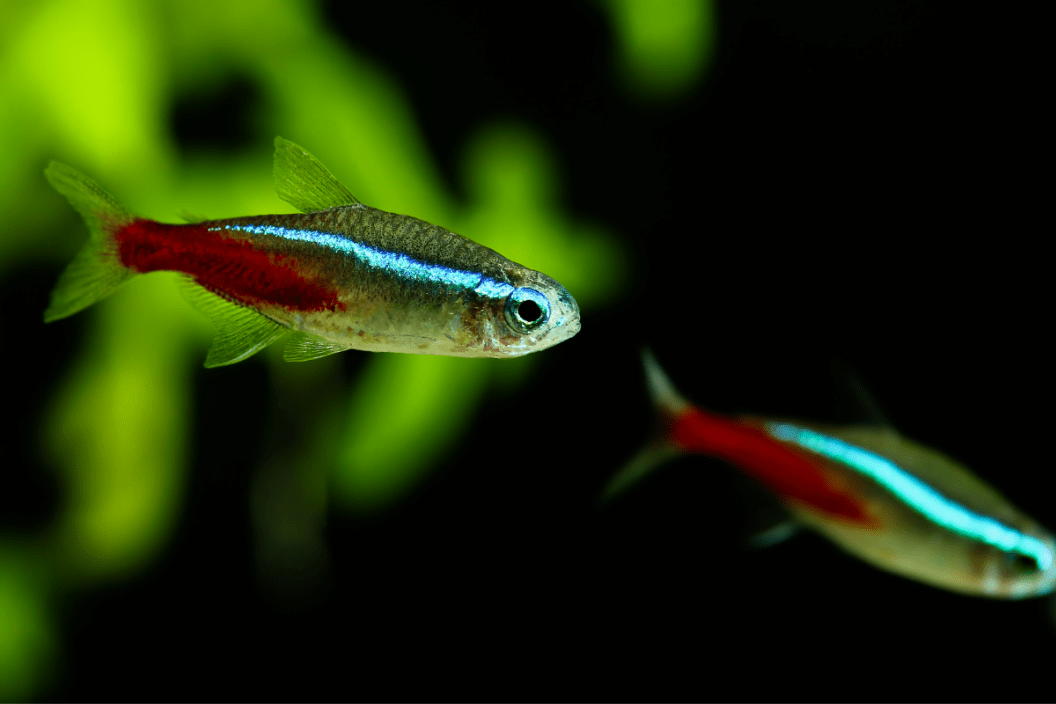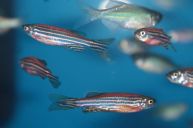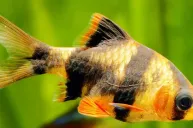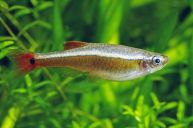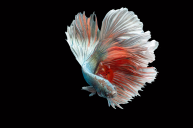Tetras are the true rainbow fish of the freshwater species.
Fishkeeping allows aquarists to care for much beautiful tropical fish. If you are a beginner or have had fish for many years, tetra fish are an asset to any tank. With colors ranging all over the spectrum and around 150 species, tetras exhibit a lot of variation. They range from chubby to slim, spotted to striped, multi-colored to neon, a literal rainbow for your tank.
Tetra History
Tetra fish were originally found in the Amazon and Americas. Though, they are most commonly found in the rivers of South America. The blind cave tetra was found in the caves of Mexico. Some have even been located in Brazil.
Tetra aquarium fish are omnivores enjoying algae, brine shrimp, and small bloodworms.
Because of their wide variety of habitats, there are many different types of tetras. Tetra species (both common name and scientific name) include:
- Neon Tetras (Paracheirodon innesi)
- Cardinal Tetras (Paracheirodon axelrodi)
- Serpae Tetras (Hyphessobrycon eques)
- Diamond Tetra (Moemkhausia pitteri)
- Glowlight Tetra (Hemigrammus erythrozonus)
- Congo Tetra
- ?Glofish tetra
- Black neon tetra
- Black phantom tetra
- Black Skirt tetra
- ?Penguin tetra
- ?Emperor tetra
- ?Lemon tetra
- Red Eye tetra
- ?Bloodfin tetra
- Buenos Aires tetra
The neon tetra and the cardinal tetra are often confused, but the red stripe in the middle extends all the way to the tail on the neon tetra.
The fish species has quite the variety!
Tetra Tank Life
RELATED: Simple Yet Elegant, Choose Betta Fish as Your First Pet
Tank size is important! Tetras should be kept in a tank that is not less than 20 gallons. When you're setting up the tank, the most important pieces of equipment you will need is a filter and an aquarium heater. These fish love to swim in clear water. Also, you should provide a nice layer of substrate at the bottom of the tank that will remind them of their natural habitats.
Tetras like a wide variety of fish food. Options include live food, flake food, frozen foods, freeze-dried foods, and prepared foods.
Shade and appropriate lighting lessen the stress on tetra fish, which in turn, makes them healthier. They like to hide in heavy vegetation, so planted aquarium plants are important in your tank. Water conditions are also important to monitor, so consistent water changes are imperative.
These freshwater fish are quite the swimmers, and they prefer to do so in the middle of the tank. Tetras are social, so be sure to have a school of them in your tank. Some tetra species are more aggressive than others and will bite at long-finned fish mates like betta fish. So be careful of which community tank mates you choose. They do well with barbs, danios, goldfish, and catfish. My neon tetras enjoy swimming around our small fish tank with their zebra danio buddies. However, every now and then, the large danio decides to chase after a tetra, causing a bit of drama in the tank. They also live with a plecostomus in perfect harmony. He cleans the tank while they all play.
Due to their small size, tetras are easy prey for carnivorous fish like cichlids, so avoid having those in your tank. You may also want to avoid other schooling fish like guppies. The two schools will not get along and may not have enough room in the tank.
If you are breeding tetra, keep a floating plant in the water for the female to lay her eggs on. Adults will also often eat the eggs, so relocate the nest to another tank if need be. Be sure to keep a lid on your tank because spawning fish tend to jump!
Tetras's average lifespan is five to eight years.
Do you have tetras? Show us on our Wide Open Pets Facebook page!
